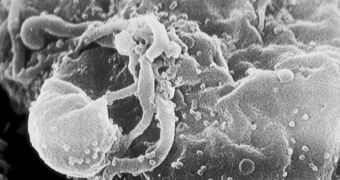Following a lucky discovery, scientists prove that the AIDS-causing HIV virus is actually about a hundred years old, virtually a few decades older than originally believed.
The proof was lying in a box placed on an old storage room belonging to the University of Kinshasa in the Democratic Republic of Congo. Dr. Michael Worobey from the University of Arizona, one of the authors of the report on the human immunodeficiency virus' origins said that “It looked like it had been gathering dust since the 1960s”. The box contained the paraffined remains of lymph node tissues, mysteriously removed from a 28-year-old woman living in Kinshasa in 1960, whom the recent analysis proved to have been infected with HIV.
The “frustratingly small bits and pieces” of HIV (as Worobey called them) from the remains were compared to those of a Bantu man also living in Kinshasa in 1959. The two samples of HIV were found to be genetically different by 12%, which proves that the virus had evolved into at least two subtypes by 1960. Corroborating this finding with the fact that HIV is known to mutate at constant rates, the experts managed to extrapolate how long it took HIV to evolve up to that stage. The result was 50 years, which pushes the original estimations of the first occurrences way back, during 1884 to 1924; to be more precise, 100 years ago, in 1908.
According to general belief, the AIDS-transmitting virus is the descendant of a virus type found in monkeys, which traveled and adapted to the humans from Africa, possibly as they were butchering the chimpanzees. As Worobey suggests, the expansion of the African cities took care of the transmission of the virus, by causing crowding and the proliferation of prostitution. Also, he explains that Kinshasa may have provided the perfect environment for the virus and perhaps that's why HIV didn't appear earlier or in another place. It took quite a while to identify the virus, since African people died young from various other diseases, like malaria or tuberculosis, while the AIDS symptoms are slow to manifest and often masked by characteristics of other illnesses that enhance its devastating effects.
As the scientist states, it would require alternative approaches on education and behavior in order to promote circumspection, fidelity and protection, so that, on average, every person with AIDS infects less people, which will cause the pandemic to fade away in time.

 14 DAY TRIAL //
14 DAY TRIAL //